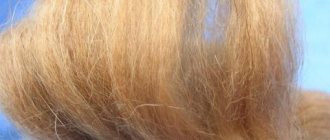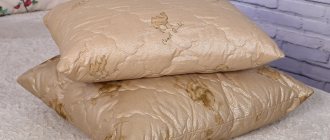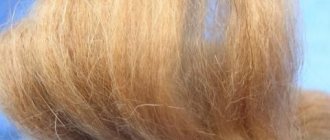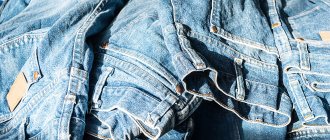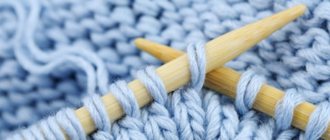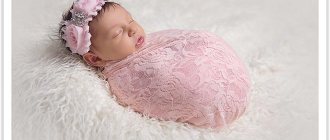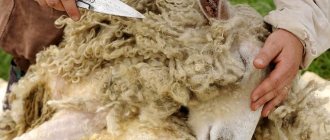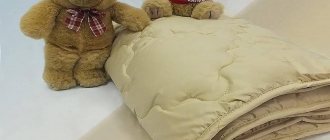Positive and negative qualities
Advantages of a camel wool blanket:
- Lightness due to the “empty” texture of the fibers. They weigh significantly less than quilted and sheepskin blankets.
- Maintaining normal body temperature. Cool in summer, warm in winter.
- Durability, wear resistance. The service life is 15 years, but with proper care and careful handling they will last 20-30 years.
- A camel wool blanket allows air to pass through without creating a greenhouse effect.
- Hygroscopicity. Absorbs sweat quickly and also quickly evaporates moisture outward.
- Does not accumulate static electricity; repels dust.
- Elastic, shape-stable. They do not roll or crumple after washing.
- Health benefits. Improves blood circulation, normalizes the functioning of the cardiovascular system. Accelerates metabolism, relieves inflammation, destroys harmful substances produced by the body. Benefits for the skin: rejuvenates, makes it fresh, firm and elastic. Improves the condition of diseases of bones and joints.
Cons of blankets with camel hair:
- It pricks if the product is open.
- High price. But it fully pays for itself over such a service life.
- Lanolin in the composition can cause allergies. Dust mites and bacteria often multiply in natural materials.
If you are not predisposed to allergies and don’t mind the money, it’s worth purchasing this item.
Why it's useful
Even in ancient times, it was believed that camel hair had special properties. Eastern healers mentioned it in their medical treatises. Some peoples believed that this material protected not only the human body, but his spirit. In families, camel wool blankets are often passed down through generations.
Camel wool does have differences from other types of wool. These animals, thanks to their fur, are able to withstand sudden temperature changes without experiencing discomfort. This explains that a camel blanket has an amazing property - excellent heat retention in the winter season, cooling the human body in the summer.
Camel hair is coarse, hollow hair combined with a soft, downy undercoat. The structure of the hair provides increased thermal insulation and weightlessness of the material. Blankets with this type of padding are very light.
Varieties of camel wool blankets
There are several different types based on the manufacturing method, appearance, composition, and density.
Appearance
There are two types of camel wool blanket:
- Open, with fur facing out. A woven product, rough and prickly, if made from the hair of an adult animal. To make a plaid blanket, camel down of young animals is used. It is soft and pleasant to the touch, warm. Woven products are often used for decorative purposes.
- With closed hair. No fluff is used here, only hairs. In the case its prickliness is not felt. This is a quilt with different types of stitching. Parallel lines at a great distance from each other weakly hold the filler, it crumples. Karostep ones are fastened with patterns, the wool is better fixed, but it clumps after a while. Cassette products are stitched in perpendicular directions, the resulting small cells hold the wool tightly, preventing it from moving.
Closed versions are easier to use, but will not achieve the therapeutic goal.
Density
According to this parameter they are divided into 5 types:
- Very warm 900 g/sq. m. For an always cold bedroom or a person who is always freezing.
- Winter 420-500 g/sq.m. m. Suitable for any cold winter.
- Demi-season. 350 gsm m. For autumn or spring. Suitable for all seasons for people who do not react sharply to temperature changes.
- Light 200-220 g/sq.m. m. Comfort in a warm room.
- Summer or blanket 160-180 g/m2. m. Used in the warm season or as a blanket.
The density is marked on the label with dots from five (warmest) to one (summer).
A two-layer blanket for all seasons has become popular. Two parts with different densities are used together or separately, they are fastened with buttons. It turns out a thin summer one, a medium one for the off-season and a double winter one.
How to choose
What to look for when choosing the best camel wool blanket:
- heat level;
- density;
- packing fixation level;
- the material from which the case is made;
- type of filler;
- quality of tailoring.
The degree of heat is displayed on the labels in the form of dots (from one to five). The warmest option is marked with five dots.
Another important parameter is the density of the product. If it is to be used in a cool room in winter, the appropriate density is 900 grams per square meter. For the summer model, an indicator from 160 to 180 is suitable.
The cover is made of cotton fabric:
- calico;
- satin;
- batiste;
- teak;
- twill.
These are durable, but lightweight, breathable materials. More expensive options are often made from eucalyptus fiber.
Camel stuffing is made from both the wool of young animals and adults, and the undercoat is also taken. The composition of the packing is indicated on the label as a percentage.
What are the signs of a quality camel blanket:
- Uniform distribution of material in a closed version.
- Homogeneous texture of the open model.
- Finished edges. They are trimmed with bias tape or stitched with an overlocker.
- Smooth seams.
- Thick case.
Tips for choosing
How to choose a camel blanket and not stumble upon a fake:
- To the touch. The softer and more pleasant the filler, the better quality it is.
- The density of the product is chosen depending on the time of year and climate. It is better to choose a two-layer one so that you can always use it.
- Camel down or camel hair, which is better: down is more expensive, but it is softer, warmer and does not itch without a cover. It is more useful and therefore valued more.
- Camel hair cannot be dyed. The products are produced in natural colors, there are 14 of them in total. From white and beige to brick and brown.
- Uniformity. The felted blanket does not allow the hairs to come out individually. If you want to get them, they are not easily accessible.
- Smooth processing. Strong seams with even threads. The edges are overlocked or stitched with tape.
- You won’t notice the smell of synthetics; sheep fill will have a strong smell. Camel has less odor.
- Camel wool blanket, how to choose based on cost: they cannot be cheaper than 10 thousand rubles. For 2-3 thousand you can buy it from a mixture of camel and sheep wool, even if 100% wool is indicated. Up to one and a half thousand - thermally bonded wool.
- The material of the cover must be natural and wear-resistant. It should not deteriorate before the filler. Usually this is cotton sateen, calico, teak, cambric, percale or eucalyptus fabric (for expensive models).
The best blanket manufacturers are Mongolia. It is here that a large number of two-humped Bactrians live, from whose wool camel things are made. Mongolian products can cost one and a half to two times other products, with all other characteristics being equal.
By filler
Which blanket is warmer, camel or sheep: a product made from sheep’s wool is warmer. Sheep wool or camel wool, which is better to choose:
- the camel's hair is much lighter; under the heavy sheep's coat some people will feel uncomfortable, while others, on the contrary, will feel at ease;
- Items made from sheep fibers are more difficult to care for and usually cannot be washed and require dry cleaning;
- camel is much more expensive, but will also last longer; here the choice depends on the ability to spend a specific amount at a time.
Which blanket is better, bamboo or camel hair:
- Bamboo filling is easier to care for and easier to wash and dry;
- For people with allergies or asthma, bamboo is suitable, it is not allergic, does not accumulate dust, kills bacteria, mold, and any microorganisms;
- bamboo or camel, if it’s cold, wool will warm you better than bamboo fibers.
Most items are made from dog hair by hand and are more expensive. Dog or camel hair: dog hair will be too hot in the summer, but it will keep you warm in the cold northern winter.
Camel or swan down, comparison:
- artificial down does not absorb moisture, does not allow air to pass through - it is unpleasant to sleep under it in the heat, and besides, it becomes electrified;
- it is an elastic and light filler, weighs less than a camel's;
- non-allergic, not a breeding ground for bacteria, suitable for people with asthma and allergies.
Thermally bonded camel wool or not:
- the cheapest option;
- costs no more than a couple of thousand rubles;
- obtained by passing fibers through a heated shaft, they are glued together with the addition of chemical fibers;
- There is little wool in such a product, its quantity depends on the cost.
In order not to make a mistake with the filler, you need to take into account the characteristics of your body, climate, time of year, and cost.
Dimensions
Popular sizes:
- one and a half – 140x205, 145x205, 150x210, 155x215, 160x220;
- double – 172x205, 175x205, 180x210, 200x220, 240x220;
- children's - 110x140, 100x135, 100x140, 100x150;
- family – 140x210;
- European standards - 155x215, 172x205.
They are the most common.
How is it different from a sheepskin blanket?
Blankets with natural filling are the best option to create a cozy sleeping environment. The choice of options is quite small, but even accessories stuffed with sheep's wool often differ significantly from each other.
The properties depend on the breed of the animal, age, how the material was processed, when the haircut was carried out.
General advantages of blankets with natural wool:
- Hygroscopicity. They absorb moisture well while retaining heat.
- Bactericidal properties. Lanolin prevents the proliferation of pathogenic microorganisms.
- Unique thermal properties. A camel or sheep blanket maintains the most comfortable temperature. It is not influenced by external factors.
The structure of sheep stuffing is more dense, crimped, and covered with a large number of scales. The canvas remains voluminous and maintains low thermal conductivity. The fibers are securely bonded to each other, this is important for felt items.
Camel wool is very light due to the hollow inside of the hair. In terms of thermal conductivity, it is second only to a product made from llama wool - the most expensive option.
The camel's undercoat is hygroscopic and breathes well.
If you cannot choose between a camel or sheep blanket, you should study the advantages and disadvantages of both options.
The pros and cons of blankets filled with camel wool are described below, and when buying a sheep blanket, you should take these factors into account:
- the material is twice as heavy as camel down;
- it cannot be washed;
- The item has a specific smell and requires regular dry cleaning.
In terms of quality and practical properties, sheep material lags somewhat behind. Its obvious advantage is its lower price.
Both fillers are allergenic. To avoid the appearance of parasites, you need to ventilate it more often and go to the dry cleaner.
Manufacturers
Best Camel Blanket Manufacturers:
- Mongolian company of blankets made from Gobi camel wool. Makes woven options entirely from camel wool, without adding sheep or synthetics. Pleasant products to look and feel.
- Ivanovo, Aelita. Quilts are made. Cases made from natural materials of our own making. They have camel wool blankets in lightweight, standard and heavy weight.
- Trinity Worsted Factory. Produces blankets and rugs from wool and down. They are soft, warm, tender. The most famous products are wool “Karakum” and down “Sahara”.
- Russian company Runo. They have camel down and wool duvets and woven options. “Karakum” from this company are expensive plain blankets.
- Dargez is a large Russian manufacturer. They produce quilted products for adults (“Sahara”) and for children (“Camel”). There are cozy soft blankets.
- Lezheboka is a domestic company. Makes camel down blankets.
- AlViTek is a company in the Moscow region. There are lightweight and warm down options.
- Billerbeck is a brand from Germany and Ukraine. There is a popular baby cassette blanket made from combed camel hair. The cover is smooth, satin. Hygienic and sanitary standards are observed.
It's hard to say which company is better. All have their advantages and disadvantages. When choosing, you should pay attention to which product from a particular company is considered better. Some specialize in down types, others in wool, and others in blankets. This must be taken into account when choosing.
How to get camel hair
Down is obtained by combing, with the best quality being material obtained from young non-working animals. You can pick it up once every five years.
Next, the wool obtained from combing is processed on an industrial scale:
- Immediately after receiving the material, it is subjected to cleaning and pre-sorting. Both processes are carried out by hand, after which the wool is sent to the mill for production.
- The fluff is placed in special detergents, and the entire volume is washed at least five times.
- Using special machines, the natural material is squeezed out and sent to a special drying shop. There the raw materials remain for two days at a temperature of 80-90 °C.
- The fibers, cleaned and dried, then enter the spinning shop. Subsequent processing steps will include scuffing, loosening, carding and mixing, depending on the intended end product.
The result of a long process of processing raw materials is a thin and almost weightless yarn.
Camel wool is also processed manually, while the factory yarn looks more uniform and dense, without protruding fluff. “Hand-made” products are more expensive because they require more time and effort for processing than in industrial production put on stream.
We recommend reading: Diet for atrophic gastritis of the stomach
Advantages and disadvantages of wool
Camel wool has been used since ancient times to create blankets, clothing, and home textiles. The popularity of the material can be easily explained by its advantages:
- good thermal insulation;
- strength and noticeable lightness;
- hypoallergenic;
- no accumulation of electrical charges;
- high adsorption, does not allow moisture to penetrate into the fibers;
- has a positive effect on the skin and receptors.
Attention! It is believed that animal fluff can relieve inflammation and irritation and provide skin massage.
Among the disadvantages of camel wool, one can only name the high cost of products made from this material. This leads to the frequent sale of counterfeits and textiles that additionally contain synthetics.
Rules of care
With proper care, a camel blanket will last for decades:
- If the information on the tag allows, the item is washed in a machine or by hand. Water temperature up to 30 degrees.
- The laundry detergent must contain lanolin to replenish its amount in the hairs.
- Squeeze, pressing lightly with your hands, first allow the main water to drain.
- Dry on a horizontal surface in a well-ventilated room. Woolen items should not be dried in the sun.
- Once every six months the blanket is aired outside away from ultraviolet rays.
- Use a duvet cover made of natural fabrics. Without it, they cover themselves with a blanket only if the healing properties of wool are required.
This is useful to know. The service life of a quality product with good care is 20-30 years.
A camel blanket is warm, cozy, healing and durable. It’s not a pity to spend a few thousand rubles so that you can enjoy a restful sleep for many years.
© 2021 textiletrend.ru

